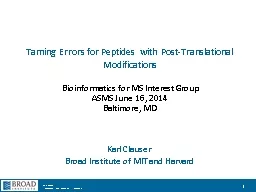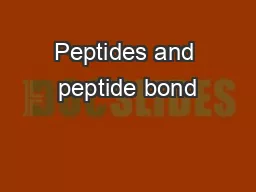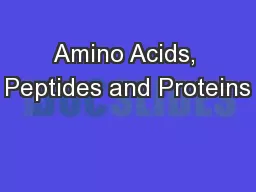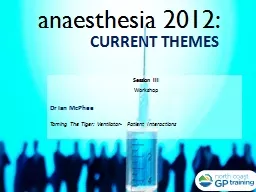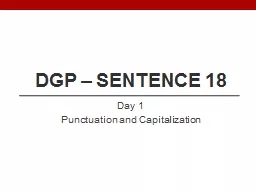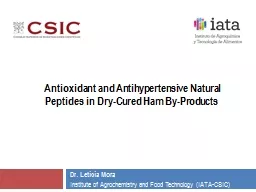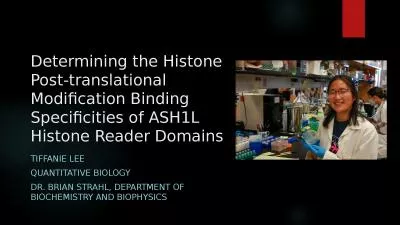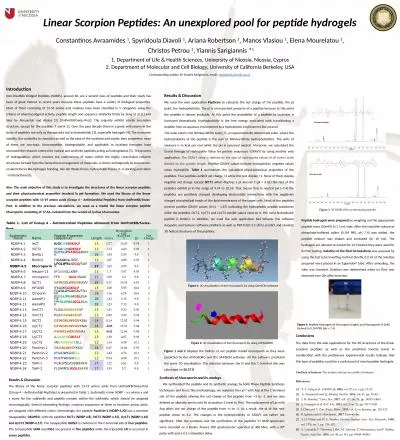PPT-Taming Errors for Peptides with Post-Translational Modifica
Author : test | Published Date : 2016-07-21
Bioinformatics for MS Interest Group ASMS June 16 2014 Baltimore MD Karl Clauser Broad Institute of MIT and Harvard 1 Making Inaccurate FDR Estimates 2 FDR 085
Presentation Embed Code
Download Presentation
Download Presentation The PPT/PDF document "Taming Errors for Peptides with Post-Tra..." is the property of its rightful owner. Permission is granted to download and print the materials on this website for personal, non-commercial use only, and to display it on your personal computer provided you do not modify the materials and that you retain all copyright notices contained in the materials. By downloading content from our website, you accept the terms of this agreement.
Taming Errors for Peptides with Post-Translational Modifica: Transcript
Download Rules Of Document
"Taming Errors for Peptides with Post-Translational Modifica"The content belongs to its owner. You may download and print it for personal use, without modification, and keep all copyright notices. By downloading, you agree to these terms.
Related Documents

